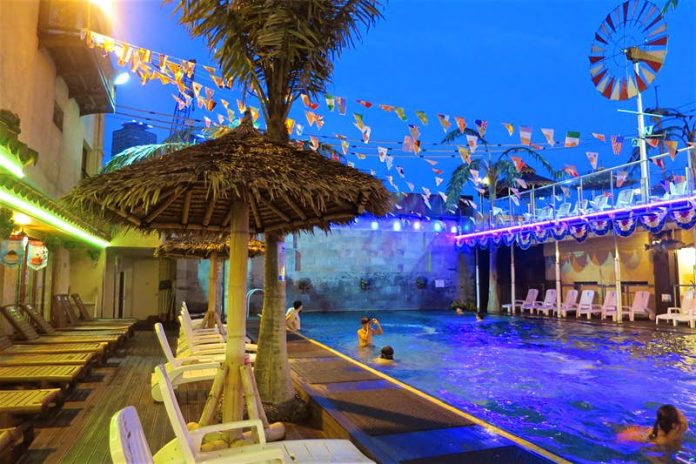Traditional bathhouses are an essential part of contemporary Korean culture. Literally ‘heated rooms’, these jjimjilbang (찜질방) are where locals come to unwind, hang out and engage in a whole host of health and beauty rituals that go far beyond a quick soak. A Korean bathhouse attracts grandmas and young couples alike. Read up on the towel techniques and Korean bathhouse etiquette to experience your first-time jjimjilbang visit like a local.
It wouldn’t be odd for a group of friends to meet up at a jjimjilbangon a Friday night. Call it a spa date, but a surprisingly affordable one (entrance is about ₩9,000-13,000). The more elaborate joints have restaurants, outdoor swimming pools, hair and nail salons and karaoke rooms in addition to the usual baths and saunas.
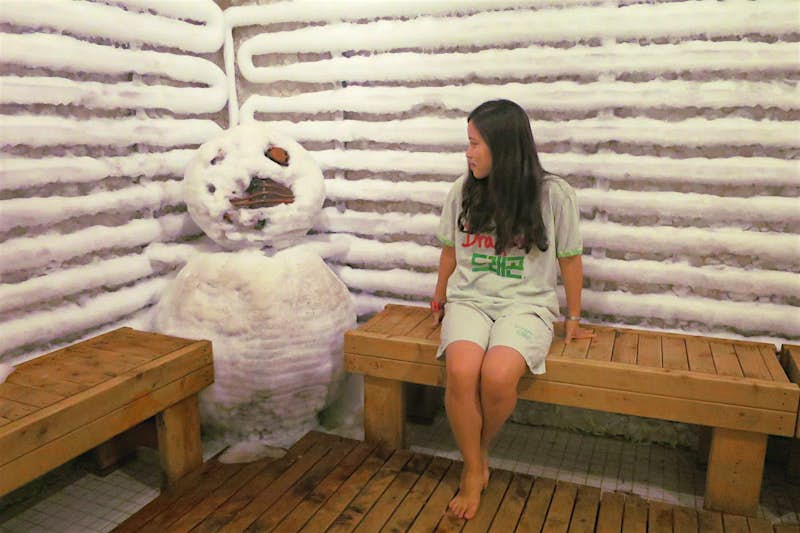
There is, however, an unspoken code of manners and customs, which can make visiting a jjimjilbang intimidating for foreign travellers. So we’re breaking it down for you, step by step. Just don your towel and follow our guide below and you’ll be soaking in a Korean spa like a pro in no time.
Getting through the door
The first thing you’re likely to see when you walk in the door is a wall of small lockers. These are for your shoes: slip them inside and take your locker key in hand to the front desk. Pay up (the price should be posted at the reception desk) and hand over your shoe locker key. In exchange, you’ll be given a new locker key for the changing room (sometimes the first key is used for both), a towel and a pair of cotton pajamas. Many jjimjilbang use electronic keys, which double as your tab; otherwise, the staff will note your locker key number if you add any services inside (such as a scrub or massage), to bill you at the end. The front desk staff should point you in the direction of the appropriate gender-segregated changing room. If not, it’s nam (남) for men and yeo (여) for women.
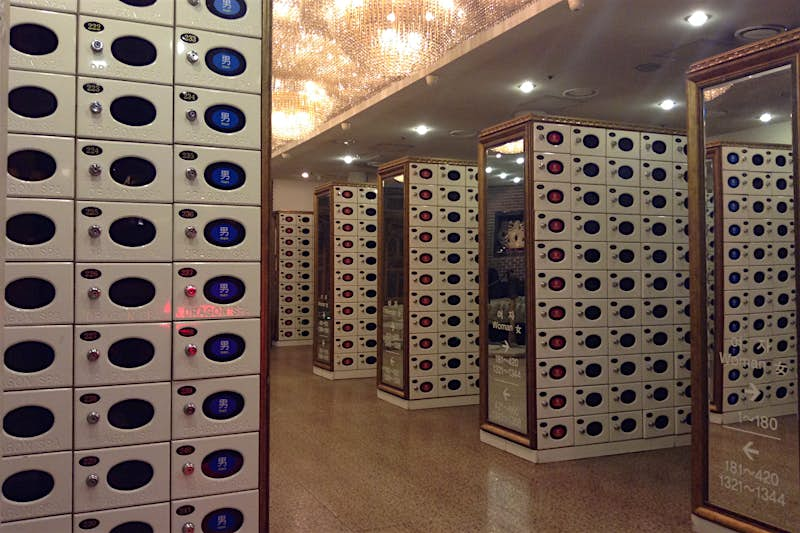
The changing room
The key in your hand should have a number on it – that’s your locker, where you’ll store your clothes and anything else you’re carrying. Most jjimjilbang have two distinct areas: the baths, which are same-sex only, and the sauna areas, which are communal. Whichever you want to visit is up to you, though most people would prefer to wash up before sweating it out (and then wash up again). But here’s what you need to know: if you’re going to the baths, you need to remove all clothing, bringing only a small towel and toiletries with you. If you’re going to the saunas, change into the pajamas. Wear your locker key on your wrist.
The baths
The cardinal rule here is that you need to wash before getting into the baths. There will be rows of washing stations and piles of plastic stools; grab one and pick a faucet. There will be soap, but there isn’t likely to be shampoo or conditioner, so you’ll need to bring your own (most convenience stores in Korea sell little single-use packets of various toiletries; jjimjilbang usually sell them, as well). You don’t have to wash your hair, but if you don’t and it’s long, make sure to tie it up so it doesn’t trail in the bath. Once you’re nice and clean, head to the tubs. There will usually be a variety of temperatures, from about 38°C (not too hot) to about 42°C (pretty hot), and also a cold tub. In most jjimjilbang, these are indoor soaking pools, but some also have open-air baths. Bathhouse regulars have their individual routines down to a science, but in general, optimal soaking time is considered to be 20 minutes. To stay in this long, it’s best to keep your heart above the water.
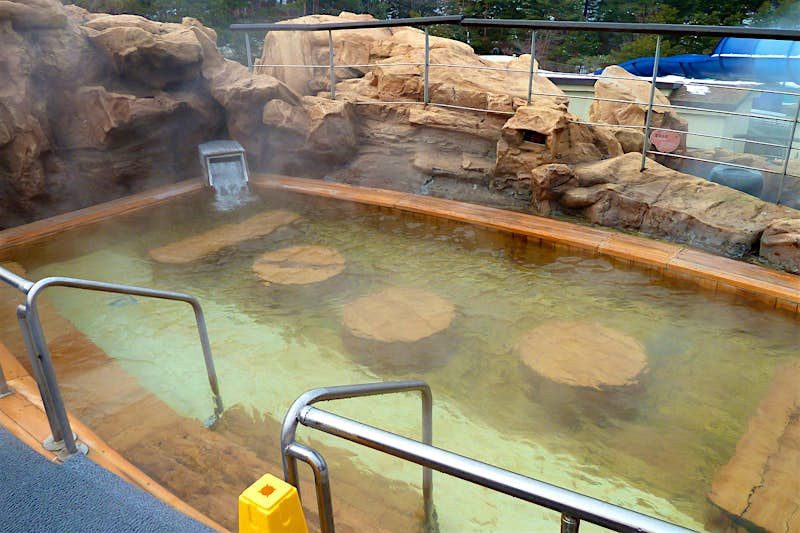
Koreans, and women in particular, are mad about exfoliation, and you’ll see them giving themselves long and hearty scrubs (you can also buy scrubbing towels and mitts at convenience stores and markets). If you really want to up your jjimjilbang game, you can opt for a professional scrub (called seshin; 세신). In a corner of the bathroom, there will be a few plastic tables manned by ajumma (aunties) in their underwear (or men on the men’s side) wielding scrubbing mitts. They’re generally merciless, but you will never have smoother skin in your life. You’d do this after soaking for a bit, so the steam from the baths loosens your skin. A scrub usually costs ₩15,000-20,000 (you can also get an oil massage here for about ₩60,000).
Being in the buff
The most difficult part of the experience for a lot of first-timers is being naked with strangers. Fear not: Koreans consider this a normal part of visiting a jjimjilbang and you are unlikely to be given a second glance by anyone else. You can use your towel to strategically cover yourself as you walk around (the towels are small though, so this isn’t easy). You shouldn’t bring it into the water though, and you’ll want to keep it dry enough that you can towel off before heading back to the changing room. The best – and more importantly, the cutest – way to achieve this is to wear it on your head, rolling the ends to look like a sheep.
A few more manner tips: splashing and loud talking might earn you dirty looks.
The saunas
The sauna you might picture – a steaming room heated to hellish temperatures – is probably different from a Korean sauna (and if you’ve never liked saunas, you might like these). Traditional Korean saunas (called hanjeungmak; 한증막) are stone or clay kilns heated to between 50 and 90 degrees celsius, and are really quite pleasant.
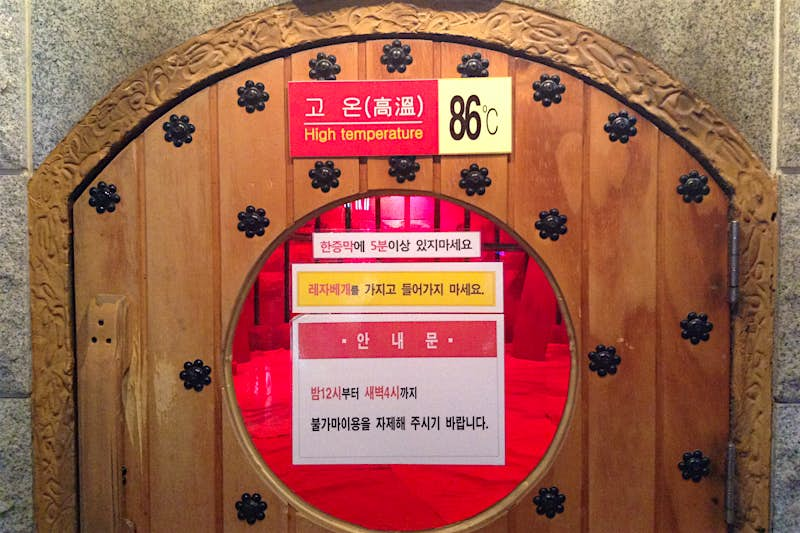
As you lie on hemp mats (or sometimes salt or jade crystals), the heated stone gently warms your body and after about 15-20 minutes, you start to sweat. It’s actually quite easy to fall asleep, so mind that you don’t (or risk dehydration). Cap off a good sweat with a cold, sweet sikhye (식혜), a traditional fermented rice drink usually sold at jjimjilbang. You can also buy eggs that have been steamed in the saunas (called maekbanseok gyeran; 맥반석계란).
The sleeping rooms
Jjimjilbang, which are open 24-hours, actually double as Korea’s best budget accommodations: for a few thousand won more than the standard entrance fee, you can opt to spend the night in the sleeping room. At simpler spots, the sleeping room might just be a wide room with some thin plastic mattresses (and yes, they are thin) and squishy plastic blocks (‘pillows’) on the floor. At more sophisticated places, the sleeping rooms resemble capsule hotels, with two levels of cubbyholes, which offer a little privacy. Some have separate rooms for women and snorers (regardless, ear plugs are a good idea). Some also have blankets to loan or rent, though the rooms are usually heated – traditional under-floor ondol style – such that they’re not necessary.
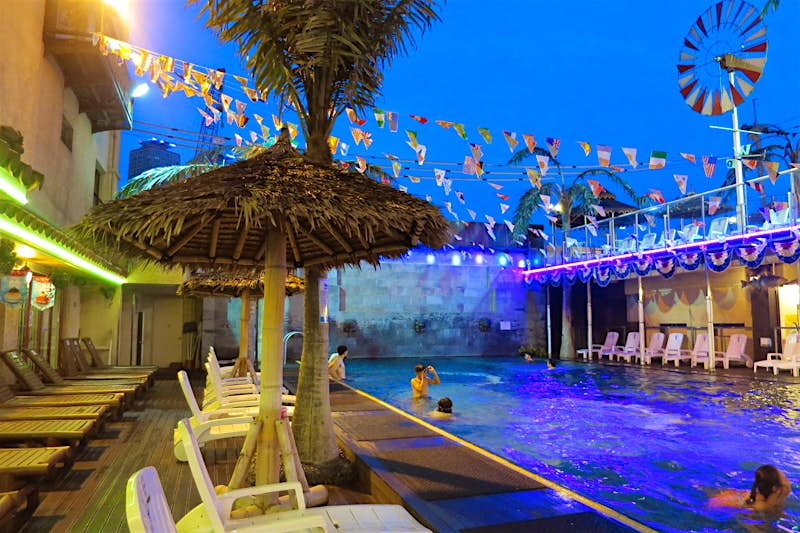
There are also usually big common rooms where people congregate to watch TV, sit in massage chairs, snack and generally hang out. These areas are mixed and non-naked, so make sure you wear the pajamas provided. Some of the fancier jjimjilbang, such as Dragon Hill Spa in Seoul, also have outdoor swimming areas, hot tubs and entertainment zones like arcades to keep sauna-goers busy, sometimes throughout the night.
Checking out
This part’s easy: hand your locker key to the front desk staff and they’ll present you with a bill if you’ve racked up any charges inside. Once you’re paid up, you get your shoe locker key back, and you’re good to go. Most jjimjilbang expect you to stay no more than one night, though some, like Siloam Sauna in Seoul, will allow you to stay multiple nights and to come and go. Who knows, you just might find yourself wanting to come back.

